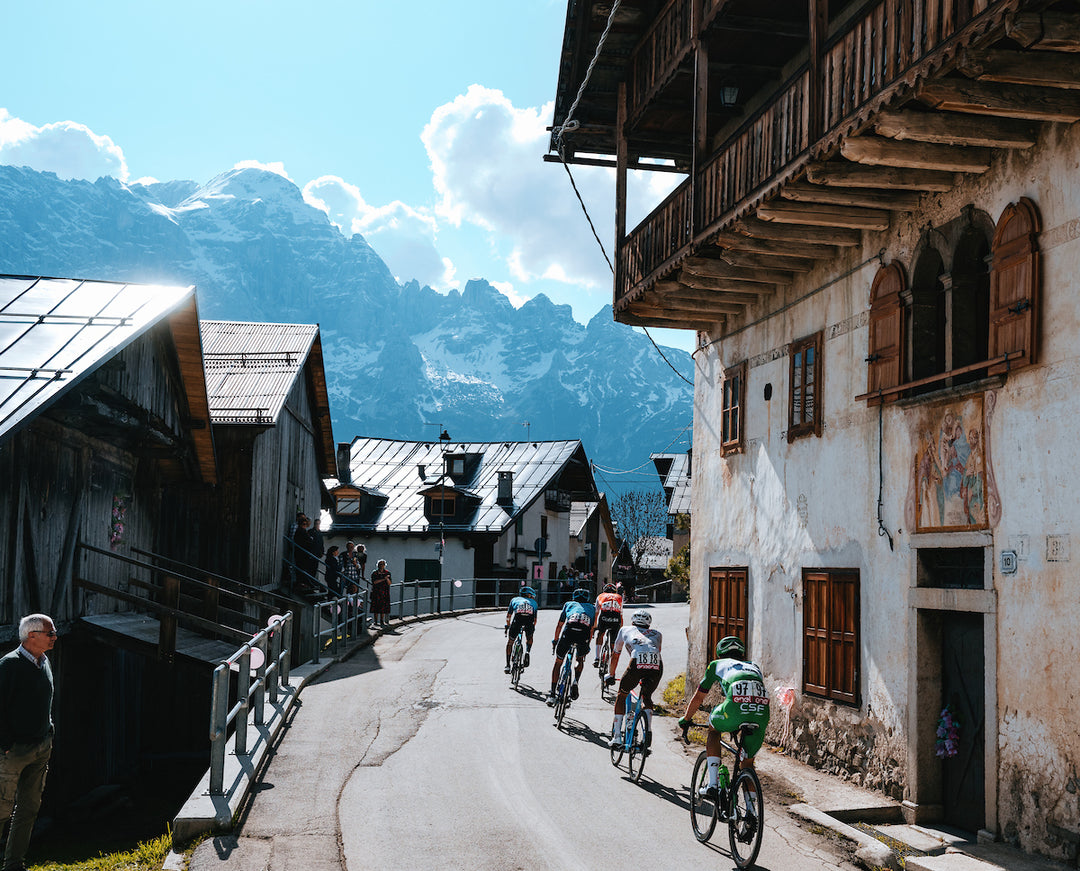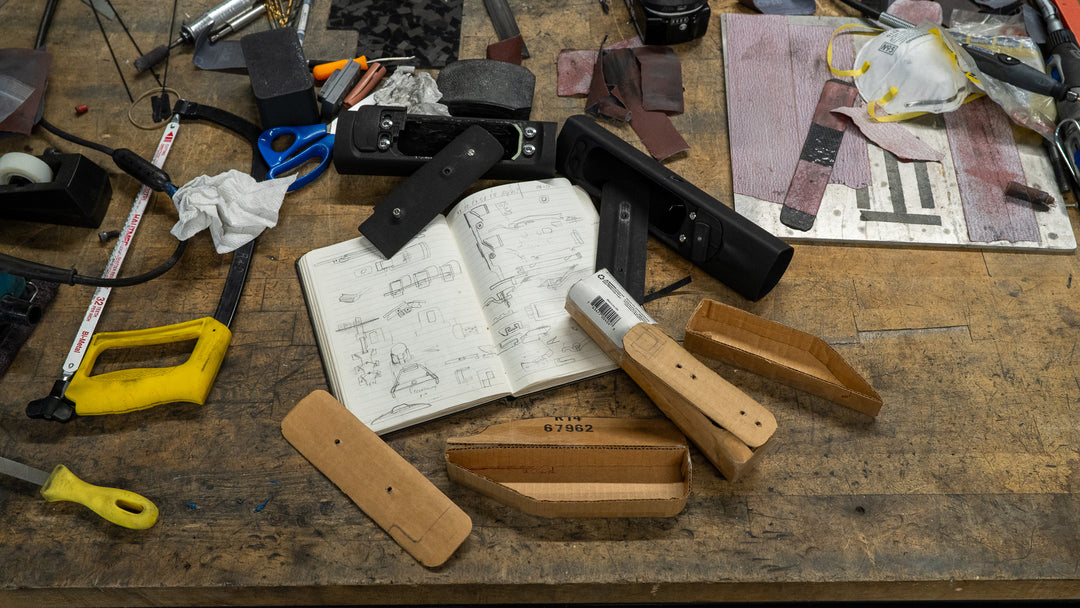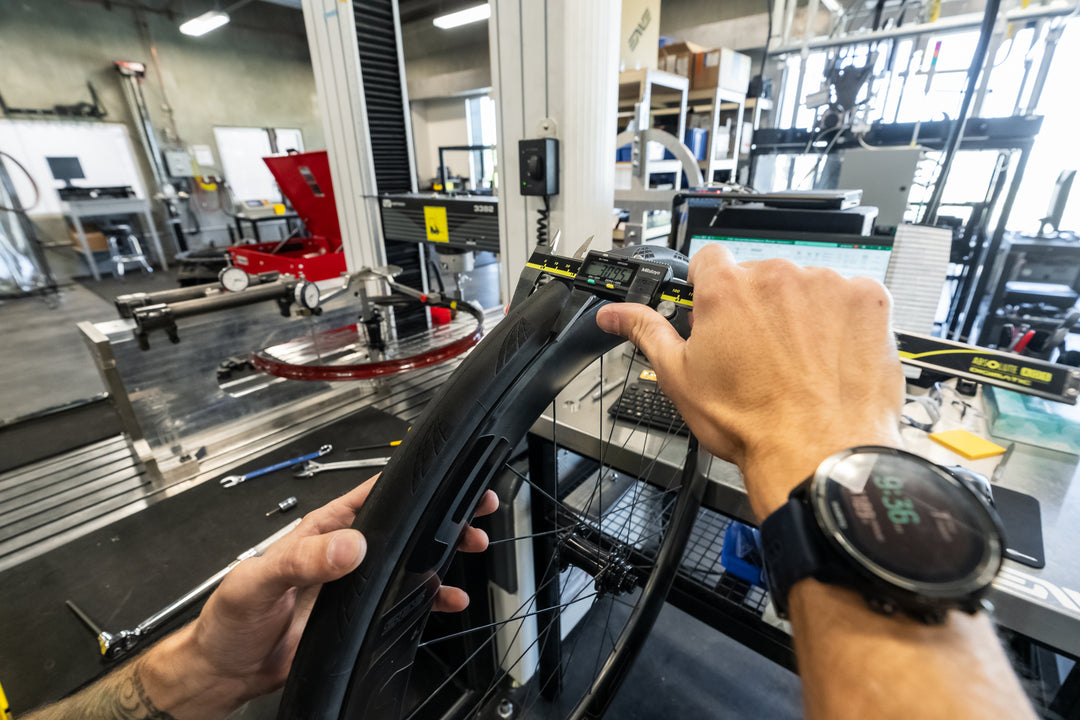Behind The Product - Frame Storage
Carbon frame development has opened up a staggering amount of new possibilities. Aside from improved ride characteristics and lighter weight - they allow us to utilize the frame itself as a storage container through unique shaping. Putting a door and a latch on a tube of a bike frame, however, isn’t so simple. As with any project at ENVE, we sought out a solution that was both elegant in function and in aesthetic, but not overly complicated to use out on the trail. Similarly, cable management in this storage tube needed to follow the same ethos - elegant and not overly complex.
The Storage Solution
If you’ve ever had the luxury of shutting a solid oak door, or felt the latch on an antique automobile - you know just how much satisfaction that sensation can bring. It’s not necessarily the weight of the mechanisms, but how precisely mechanical they feel and how well they are put together. Similar to both of these, the latch system on our storage door leaves you with that same pleasant feeling. There’s a reassuring, deeper resonating ‘click’ that tells you your cargo is secure.

The original guiding principle for the engineer behind this design, Scott Neperud, was ‘Make it simple. Make it robust’.
From an aesthetic point of view - Neperud was on a journey to create something that takes up the absolute most minimum amount of space and blends in flush with the profile of the downtube.
“I was pretty unhealthily obsessed with keeping everything sleek to the tube of the bike and getting as much space as we reasonably could, without having the downtube look like a python that just swallowed its prey”, says Scott. “Making it disappear into the bike and hardly visible from a distance without any weird lump or protrusions was a high goal I held. Similarly, however it opened had to be a motion that had virtually no possibility of happening accidentally. I didn’t want to have a device that could pop off on a ride and ruin your day”, he continues.

The testing on the components was grueling. Neperud and the team were able to create a test that would lift the bike by only the door itself with over 180 lbs attached. Once they had a design that wouldn’t flinch from that abuse, they started looking at how it could get gummed up. For the latch, Scott says, “I had a spray bottle full of super concentrated extra-sticky energy drink mix. I would spray the mechanism down with the concoction, kick some dirt and dust into it - then leave everything to bake out in the hot Utah summer sun. Repeat every couple hours for weeks on end. This led us to some tweaks and fine tuning that really paid off from a durability standpoint. I’m not saying you can’t get it goobered up enough to stick a bit, but you’ve gotta be trying pretty hard.”

All of the revisions and testing gave us the final product, and patent that you see today on our MOG and Fray bikes. It took iteration after iteration to get us a bike feature that everyone references when they come into contact with these frames. “I went through something like 40 iterations of doors and latch mechanisms. I’ve got several pages of sketches too. Those don’t even include all the models I ended up restructuring and writing over - lots of ideas. I pushed until the very bitter end for as many design tweaks as possible. While this did cause delay, it was worth it in that we ultimately kinda nailed it on the design,” concluded Scott.

The Cable Management Solution
While clasps, clips, latches, and hooks are mechanical and reassuring - sometimes relying on fabric and velcro itself is enough. Product Designer, Navi Guerra tells us more, “I have multiple versions of rigid plastic or metal clips designed to be bolted into the frame. Version after version was designed and tested but everything I tried was plagued by the same problems; they were not user friendly and would snag potential cargo bags or other cargo items that are blindly tossed into the bike out on the trail.”

Similarly, the amount of varying cable sizes was difficult to accommodate for, given all of the different ways someone can configure and build their MOG gravel bike. Everything from 6mm diameter braided hoses to sub-2mm diameter Di2 cables had to be accounted for and compatible with this system.
Fortunately for Navi, his eureka moment was nearby a sewing machine.
“I drew a rectangle with a scribble in the middle and said something to Neperud to the effect of, ‘Wouldn’t it be funny if it was just a piece of fabric with some Velcro,’. Immediately I ran to the sewing machine we had in R&D at the time and made a few prototypes with the neoprene and velcro leftover from making the cargo bags. I affixed a piece of adhesive on the back and we were off and running with our best solution yet.”





